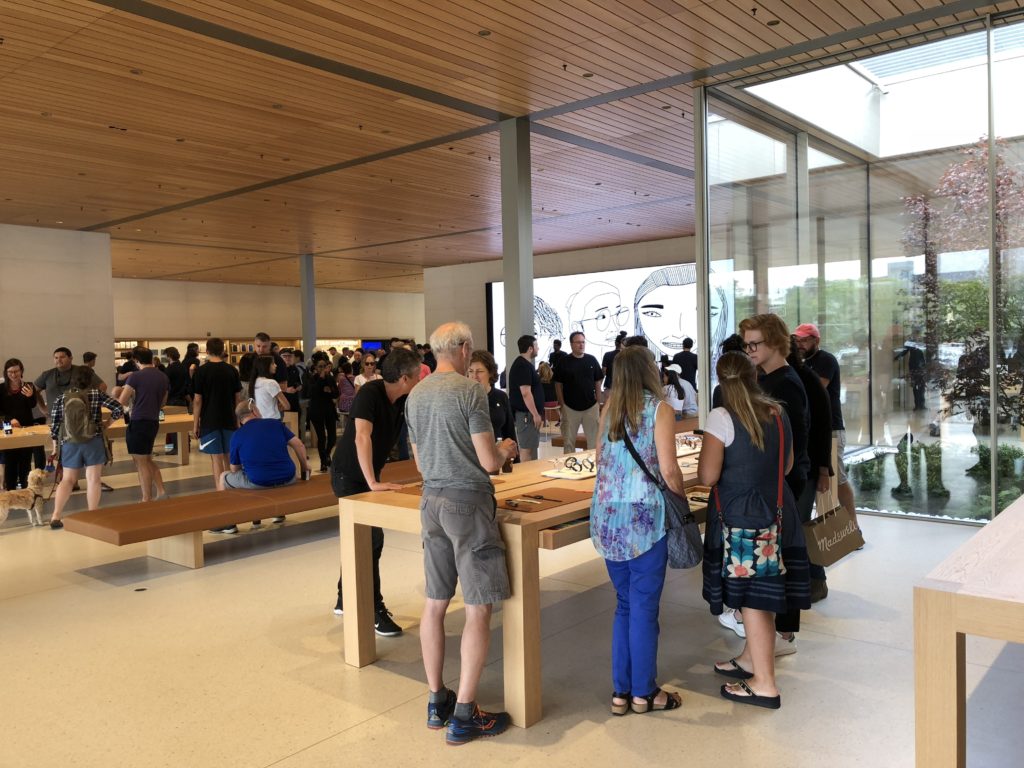We usually visit Vancouver once a year. The city has many interesting attractions, not to mention great restaurants. This year we started our British Columbia trip in Pemberton, a village north of Whistler. Our neighbors suggested visiting Pemberton, as they’d been there the month before.
We visited Whistler for a day our first year living in Seattle. It was just after the 2010 Winter Olympics had been awarded to Vancouver/Whistler. It was just too touristy for our taste. Whistler’s business switches in the summer from skiing to supporting hikers, mountain bikers, and general tourism. We stopped at Whistler en route to Pemberton and found that our assessment hadn’t changed much in 15 years. A map of the mountain bike trails around town is good for a laugh, though. Here are a few snarky names of the black diamond (most challenging) trails:
- Comfortably Numb (Does this refer to one’s butt after a ride on this trail?);
- No Girly Man (As the longtime Ms. magazine section said, no comment);
- Cheap Thrills (Cognitive dissonance alert: On a $1500 mountain bike?);
- Industrial Disease (This is the first time I’ve seen something named after my favorite Dire Straits song).
Our temporary home in Pemberton was the Pemberton Valley Lodge. We had a suite with a separate bedroom and a kitchen. Downtown Pemberton is Whistler for the rest of us. There are a few restaurants, two grocery stores, and a few other shops. Tourist attractions other than riding down the road to Whistler include a horse tour and two golf courses. We had dinner at one of the clubhouses on our first night. We also walked around the farmers’ market on Friday.
The “death march” of the trip was a hike to the Joffre Lakes on Friday. This trail has burgeoned in popularity over the last ten years. In 2008 8000 people took the trail. One year later, thanks to social media, the trail hosted 108,000 hikers. The park is a 20-mile drive north of Pemberton, up some hair-raising hills. The hike was pretty hair-raising as well. The trail went up 1000 feet between the first and second lake. The trail between lakes two and three was extremely rocky. My knees and ankles felt every last rock on the way down. By the time we got back to the trailhead, our legs were not happy at all. A hot shower and a walk around the flat downtown improved matters.
Saturday we drove down to Vancouver. Doing Pemberton first made a lot of sense, especially when we saw the northbound traffic on the Sea to Sky Highway. Our pied-à-terre in Vancouver was the Times Square Suites. It’s a block west of our former regular hotel, which is being converted back to apartments. Saturday afternoon we walked over to Gastown and had dinner at a Belgian restaurant called Chambar. Fortunately, the staff was in a good mood after Belgium’s third-place showing in the World Cup. Julian had the duck, while I had the lamb shank tagine. We accompanied our meals with La Chouffe, a Belgian beer we discovered in Paris. We then walked back to the hotel.
Sunday morning we started off watching the World Cup championship match between France and Croatia. (Félicitations, les Bleus!) I admit that I was rooting for Croatia, but both teams overcame stiff odds to play in the final. After the match, we walked to our traditional breakfast joint in Vancouver, De Dutch. Granville Island was the next stop. Julian bought two sauce dishes and a jar of fireweed honey. On the way back we stopped at the Transylvanian Traditions bakery to pick up desserts for later. Dinner was at a Korean restaurant two blocks away from the hotel, Ma Dang Goun. My chicken bi bim bap bowl was okay, but our friends at Korea House in Bothell do it better.
Monday we had breakfast again at De Dutch, then wandered over to the Kitsilano neighborhood to shop. We went to a clothing store where Julian found his favorite socks and I got two skorts and two shirts. Lunch was at a little pan-Asian place called Noodle Box. There’s a restaurant that may be a branch of it near where I work. After we stocked up on Montreal-style bagels at Siegel’s, we were on our way home. A fun trip.



Recent Comments